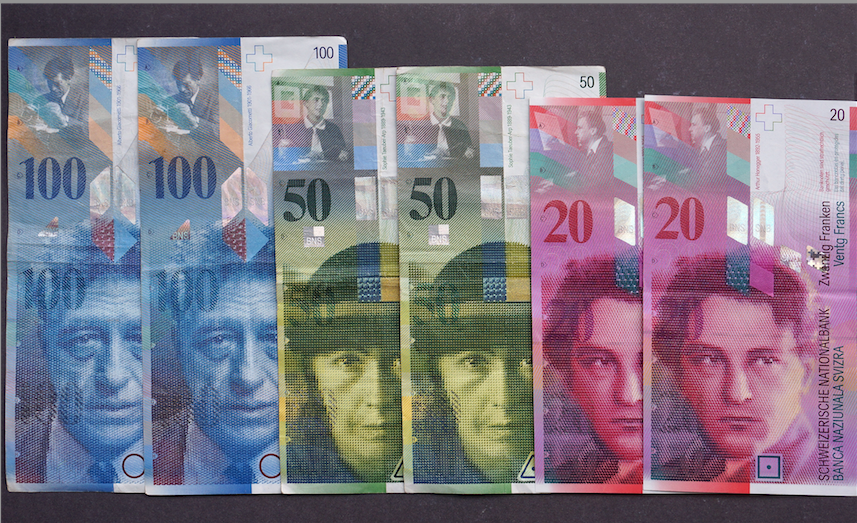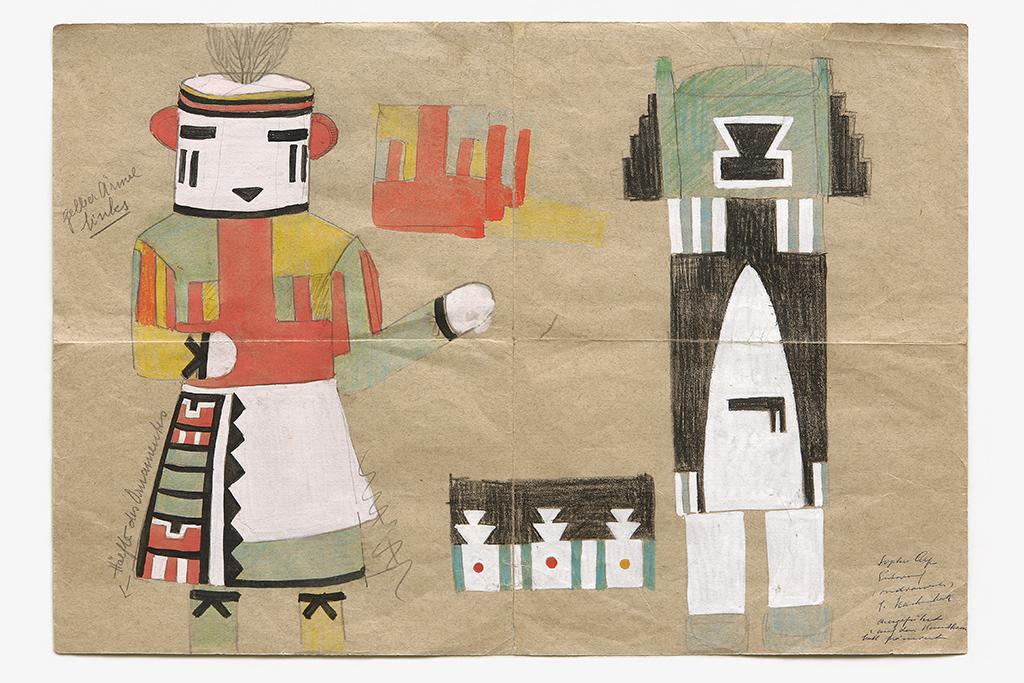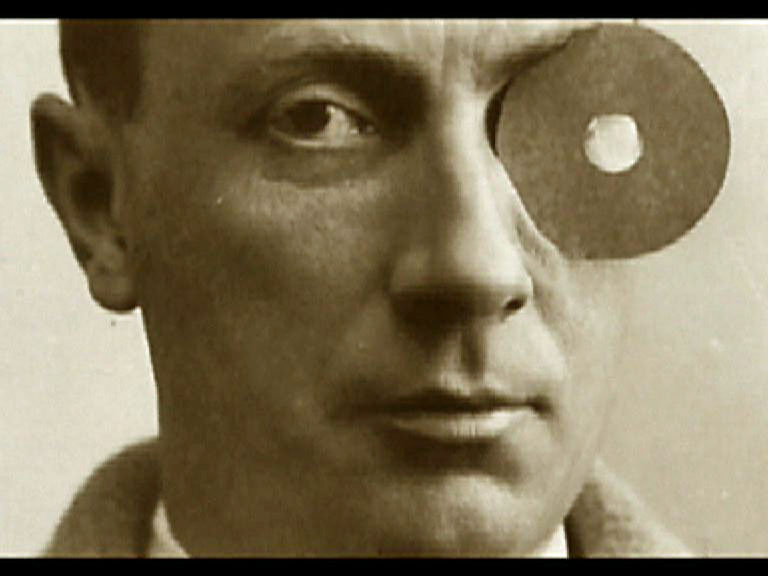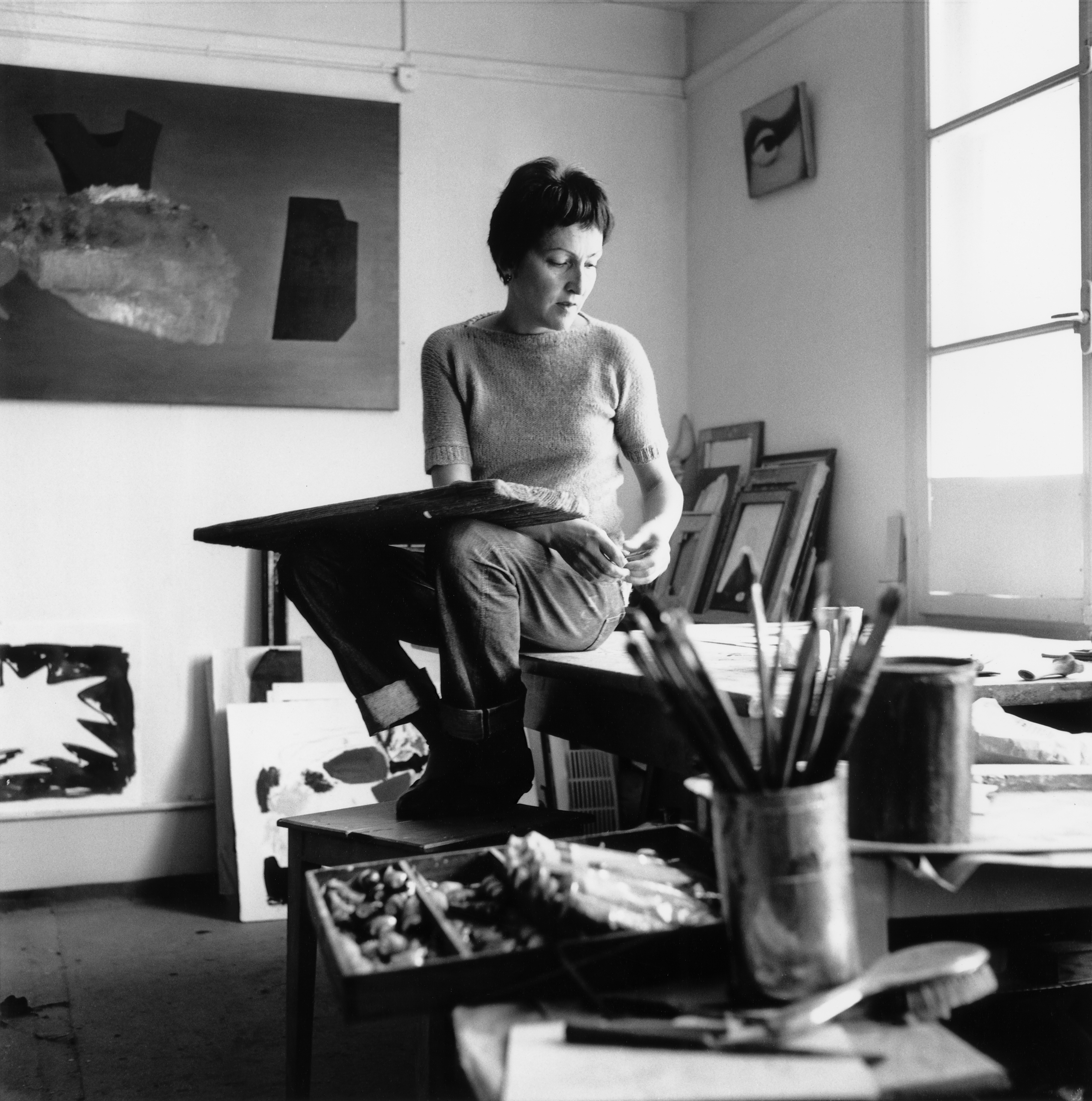From obscurity to the CHF50 note

If you look at a CHF50 bank note, you will see the face of Swiss artist Sophie Taeuber-Arp. Long neglected, this pioneer of modernism is now the subject of a major retrospective in Switzerland. But many still can’t put a name to the face on the bank note.
The situation is perhaps poignantly summed up in the Zurich police report describing Taeuber-Arp’s accidental death by carbon monoxide poisoning from a faulty stove in 1943. “Housewife”, was how she was described.
In fact, Taeuber-Arp was a painter, sculptor, designer and a dancer, as well as being the wife of fellow artist Jean (Hans) Arp. She had a masterly eye for form, colour and material, in combinations which still seem fresh and vibrant today.
This is in evidence in the largest ever survey of her artworkExternal link – over 300 works, including colourful textiles, elegant furniture and bold geometric shapes – at the Aargauer Kunsthaus, where she is described as “one of the most important Swiss artists of the 20th century”.
But, as this report from Swiss television shows, she largely remains an enigma to the Swiss public, despite being on one of their bank notes for the past 20 years.

More
The little-known famous artist
Thomas Schmutz, curator of the “Today is Tomorrow” exhibition, which opened at the end of August, has some theories as to why Taeuber-Arp is not as well-known as she could be.
“One reason is that at that time, the 1920s-30s, if you wanted to become a well-known artist it was very important to work with oil on canvas, you do a masterpiece. When you do some interior decorating or you work with clothes, this does not gain you instant recognition,” Schmutz told swissinfo.ch.
Image
For example the radical puppets she created for a marionette theatre, with their geometric shaping and exposed joints were barely appreciated at the time. “These are now considered outstanding,” Schmutz said.
Another reason for her relative obscurity was that she was, during her lifetime, somewhat overshadowed by her husband Jean Arp, the Dada co-founder and pioneer of abstract art. He also didn’t help her image after her death.
“The loss of his wife was very painful for him, so he exaggerated a bit that she was a dreamer, and did everything intuitively,” said Schmutz.
In fact, she had a capacity for doing the right thing at the right time, to a high quality, Schmutz said. She also kept the couple financially afloat.
From Appenzell to Dada
Born in 1889, Taeuber-Arp grew up in Trogen External linkin the central Swiss canton of Appenzell, in an environment that encouraged independence and cultural interests.
After textile and art studies in St Gallen and Germany, she settled in Zurich, teaching textile design at the Zurich School of Arts and Crafts.
It was Strasbourg-native Arp, whom she married in 1922, who introduced her to Dada, a movement that was pushing artistic boundaries, based around the Cabaret Voltaire in Zurich. Taeuber-Arp herself appeared as a dancer at the Cabaret Voltaire and also designed a series of abstract “Dada heads” – small wooden sculptures on pedestals. But she had to keep her connections to the rebel art movement secret in order to keep her job.
In 1929 the couple moved near Paris, allowing Taeuber-Arp to finally concentrate on her artistic work: among the highlights of the exhibition are beautifully proportioned furniture and wooden circular reliefs made during that time.
But after the Nazis took Paris in 1940, the artists were forced to flee, via southern France, back to Switzerland. Taeuber-Arp died soon after her return in 1943, aged just 54.
Beyond Switzerland – the US
After decades in relative obscurity, the Museum of Modern Art (MoMA) in New York honoured Taeuber-Arp with a retrospective in 1981, bringing the artist back onto the international radar. It now has eight works External linkby the artist and, along with the Centre PompidouExternal link in Paris, is the most well-known body to feature Taeuber-Arp.

More
Sophie Taeuber-Arp’s works on show
Loans from international museums feature in the Aargauer Kunsthaus show. The Yale University Art Gallery,External link which loaned its Turned Wood SculptureExternal link (1937), is one of only a few other American institutions with a Taeuber-Arp.
Pamela Franks, the gallery’s curator of Modern and Contemporary Art, said the work was a “powerful sculptural presence” and an important part of the gallery’s renowned Société Anonyme collection of modern art. Jean Arp donated it to the gallery in memory of his late wife in 1950, having been impressed by the above collection on a visit the year before, she explained.
… and elsewhere in Europe
Other international museums feature a single work and make links to other artistic movements in Europe at the time. The Kröller-Müller MuseumExternal link in Otterlo in the Netherlands – home to the second largest collection of Van Gogh paintings – owns the white relief Parasols (1938External link), which is not featured in the Swiss exhibition.
“This work is a fine example of the freer and more expressive style Taeuber-Arp developed from 1938 on,” said director Lisette Pelsers. “Besides, her close relationship with artists like Theo van Doesburg and of course Jean Arp, who are represented in the collection too, is of importance for the museum.”
Van Doesburg was a founder of the Paris-based Abstraction-Création association of artists, of which Taeuber-Arp was a member. The pair designed the decoration for the Café Aubette in Strasbourg, dubbed the Sistine Chapel of Abstract Art, a commission which helped the Arps to later settle near Paris.
Taeuber-Arp was also one of eight women at the heart of the Louisiana Museum of Modern ArtExternal link in Denmark’s Women of the Avant-GardeExternal link exhibition of 2012. It owns “Equilibre” (1932), a “significant work” which is part of the museum’s key Concrete and Constructivist Art section, said curator and head of collection Kirsten Degel.
For Degel, Taeuber-Arp can be seen as a central artist between the art movements of the Bauhaus, which combined crafts and fine arts, the abstract de Stijl and Abstraction-Création.
And, back in Switzerland, with fellow artist Alberto Giacometti on the CHF100 note, and architect Corbusier on the CHF10, Taeuber-Arp is also in good artistic company.
Today is Tomorrow
The exhibition at the Aargauer Kunsthaus, in Aarau, which is not far from Zurich, runs until November 16, 2014.
There are more than 300 exhibits, from all the artist’s fields of activity, and it has a focus on the interrelationships between works. The museum describes Taeuber-Arp’s works as being in a “kind of cross-linked creativity”, looking back at and ahead to existing approaches. Hence the title.
The Aargauer Kunsthaus has a substantial holding of Taeuber-Arp’s works and has supplemented the show with loans from international and national museums, all of the institutes managing the estate, and various private collections.

In compliance with the JTI standards
More: SWI swissinfo.ch certified by the Journalism Trust Initiative



You can find an overview of ongoing debates with our journalists here. Please join us!
If you want to start a conversation about a topic raised in this article or want to report factual errors, email us at english@swissinfo.ch.